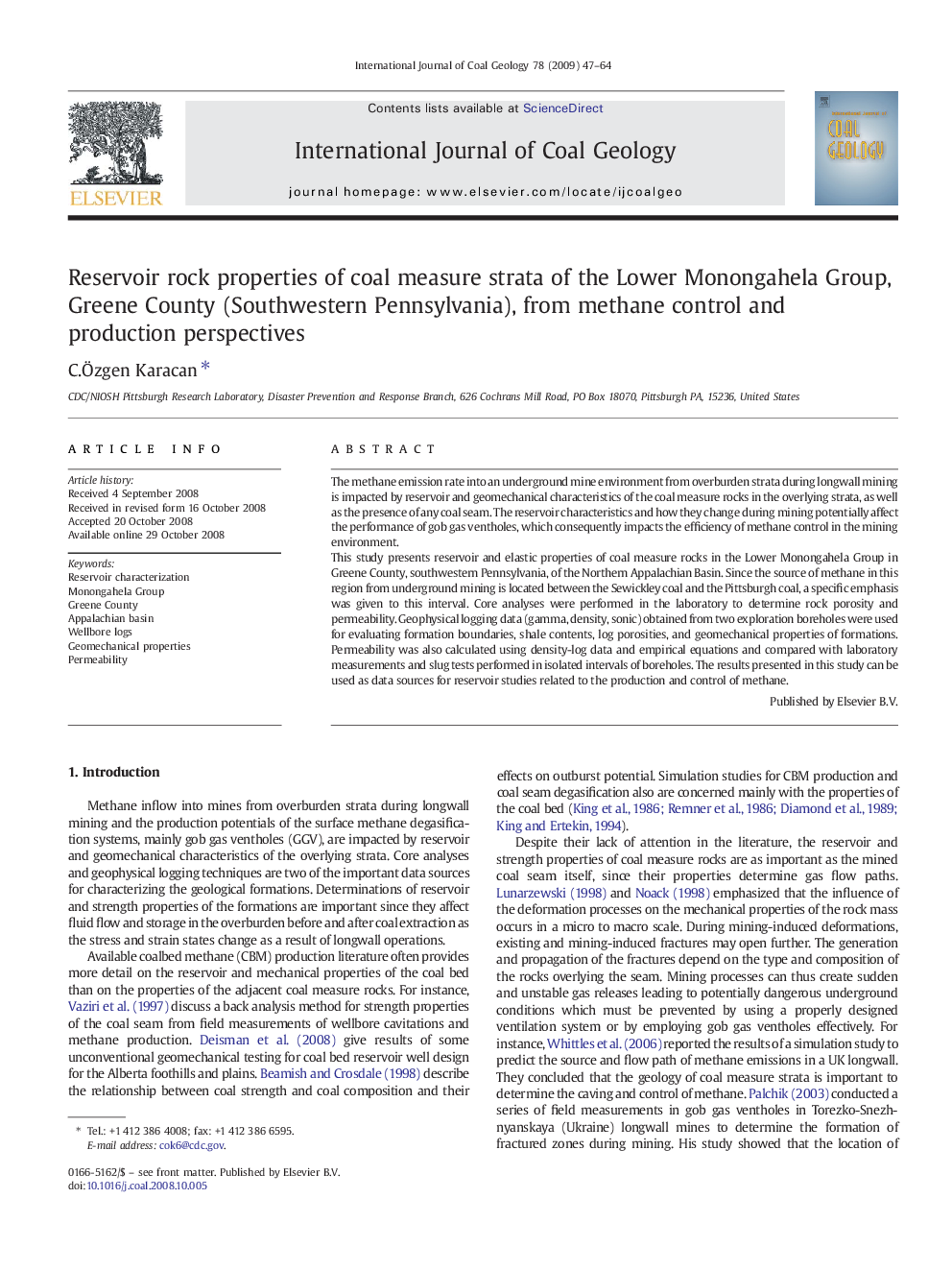| Article ID | Journal | Published Year | Pages | File Type |
|---|---|---|---|---|
| 1754027 | International Journal of Coal Geology | 2009 | 18 Pages |
The methane emission rate into an underground mine environment from overburden strata during longwall mining is impacted by reservoir and geomechanical characteristics of the coal measure rocks in the overlying strata, as well as the presence of any coal seam. The reservoir characteristics and how they change during mining potentially affect the performance of gob gas ventholes, which consequently impacts the efficiency of methane control in the mining environment.This study presents reservoir and elastic properties of coal measure rocks in the Lower Monongahela Group in Greene County, southwestern Pennsylvania, of the Northern Appalachian Basin. Since the source of methane in this region from underground mining is located between the Sewickley coal and the Pittsburgh coal, a specific emphasis was given to this interval. Core analyses were performed in the laboratory to determine rock porosity and permeability. Geophysical logging data (gamma, density, sonic) obtained from two exploration boreholes were used for evaluating formation boundaries, shale contents, log porosities, and geomechanical properties of formations. Permeability was also calculated using density-log data and empirical equations and compared with laboratory measurements and slug tests performed in isolated intervals of boreholes. The results presented in this study can be used as data sources for reservoir studies related to the production and control of methane.
